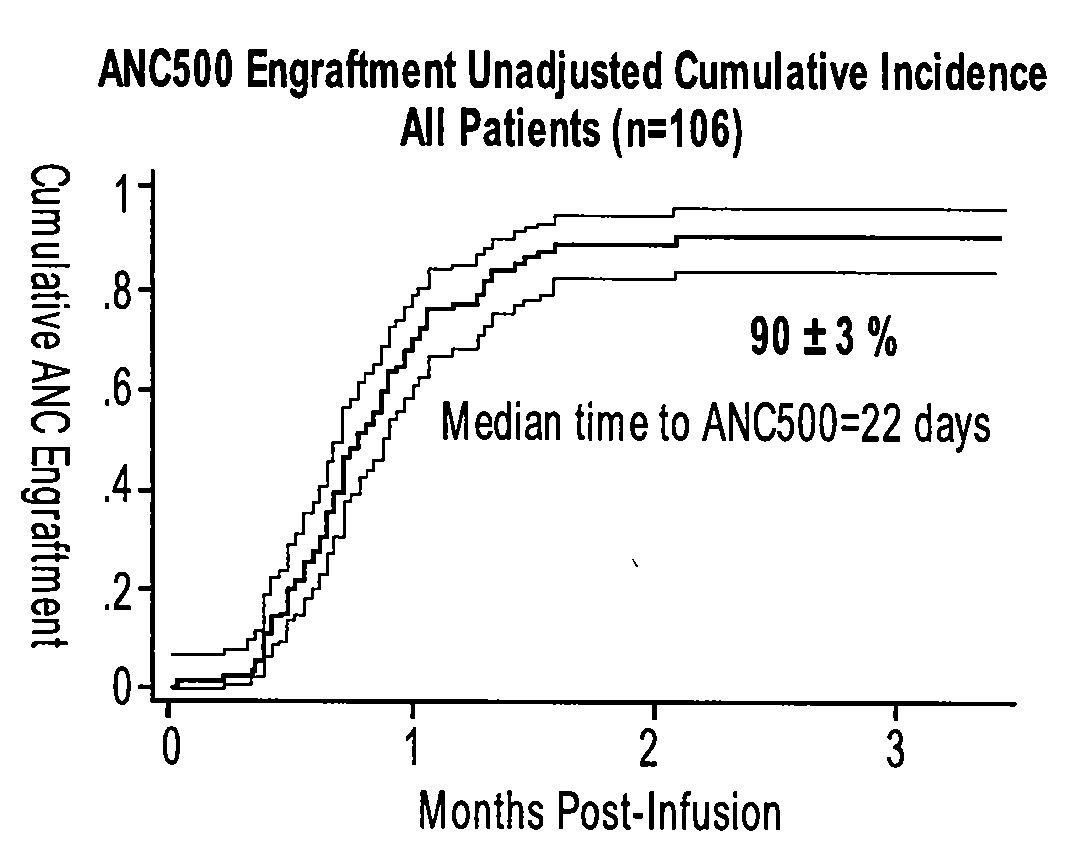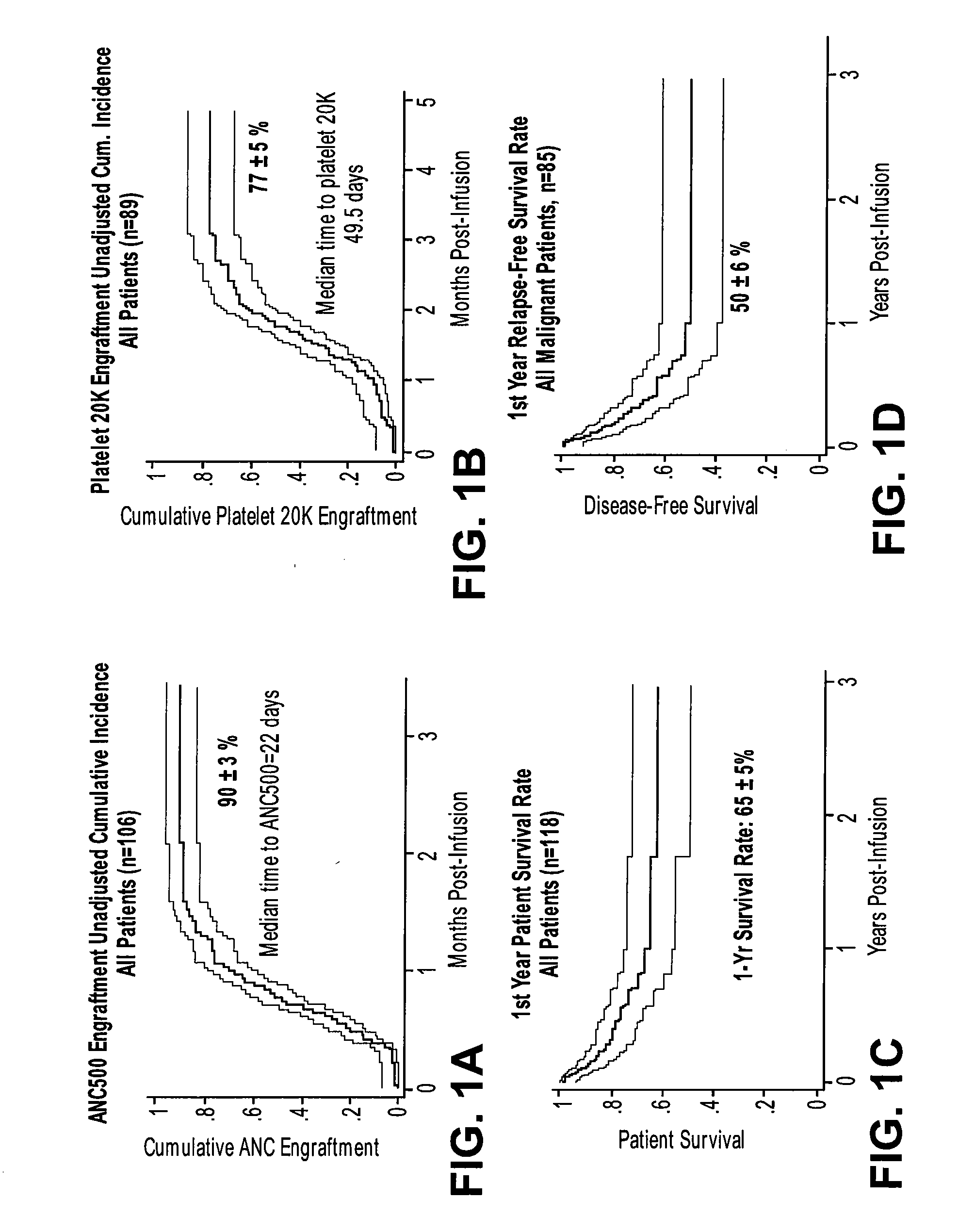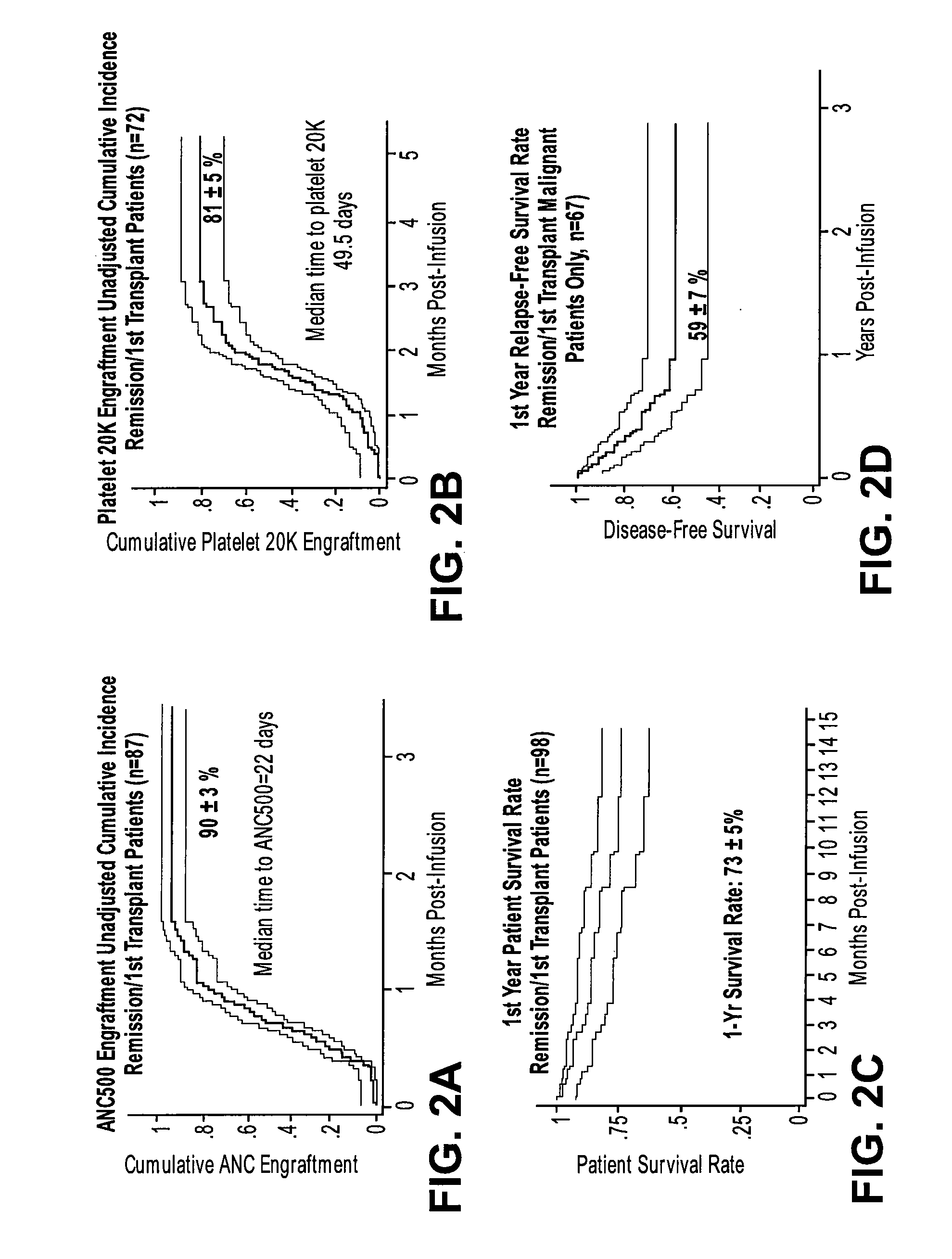Plasma-depleted, non-red blood cell-depleted cord blood compositions and methods of use
a technology of cord blood and plasma, which is applied in the field of identification, isolation and generation can solve the problems of difficult to obtain sufficient quantities, difficult to obtain sufficient numbers of human stem cells, and difficulty in isolation of normally occurring populations of stem cells in adult tissues, and achieves the effect of maximizing post-processing cell recovery and superior clinical outcomes
- Summary
- Abstract
- Description
- Claims
- Application Information
AI Technical Summary
Benefits of technology
Problems solved by technology
Method used
Image
Examples
example 1
Exemplary Plasma-Depleted Umbilical Cord Blood Unit
[0115] This example provides an exemplary umbilical cord blood (UCB) composition that has been substantially depleted of plasma but not depleted of red blood cells.
[0116] Standard cryoprotectant volume: about 15 ml of cryoprotectant for about 60 ml of plasma-depleted unit.
[0117] If CV=collected cord blood volume, AV=anticoagulant volume (e.g., between about 23 to about 35 ml), PV=plasma-depleted cord blood volume, PAV=post-processing anticoagulant volume; and APV=anticoagulated plasma-depleted cord blood volume, then an exemplary UCB composition of the present invention would comprise:
PV=60 ml×(CV / (CV+AV));
PAV=60 ml×(AV / (CV+AV));
PV+PAV=APV=60 ml; and
Pre-freeze volume=APV+cryoprotectant volume=60 ml+15 ml=75 ml.
example 2
Plasma Depletion of Umbilical Cord Blood Units Increases Hematocrit and Red Blood Cell Concentration
[0118] This example illustrates that processing collected umbilical cord blood (UCB) according to the methods of the present invention increases the hematocrit (i.e., percentage of red blood cells in the final volume) and red blood cell (RBC) concentration of the UCB units.
[0119] UCB collected from 488 newborns were assayed to determine the hematocrit (“PRE-HCT %”) and RBC concentration (“PRE-RBC (106 / 1)”) of the samples prior to the plasma depletion processing described herein. After processing, the hematocrit (“POST-HCT %”), RBC concentration (“POST-RBC (106 / μl)”), and white blood cell concentration (“POST-WBC (103 / μl)”) were determined. As shown in Table 3, processing UCB units by plasma depletion according to the methods of the present invention provides a substantial increase in the hematocrit and RBC concentration.
TABLE 3Pre- and Post-Processing Numbers for488 Umbilical Cord...
example 3
Comparison of Plasma-Depleted, Red Blood Cell-Depleted, and Whole Blood Umbilical Cord Blood Units
[0121] This example illustrates a comparison of the plasma-depleted cord blood compositions of the present invention with whole blood and HES red blood cell-depleted units.
[0122] Plasma-depleted (PD) umbilical cord blood (UCB) units have on average about 1.8 times the hematocrit of whole blood units or red blood cell-depleted (RD) units. The hematocrit corresponds to the percentage of red blood cells (RBC) by volume for a given unit. Without being bound to any particular theory, the higher hematocrit of the PD UCB units of the present invention advantageously provide better cryopreservation properties and / or improved clinical outcome.
Whole BloodPD BloodRD BloodHematocrit≦40%≧50%≦50%
Red Blood Cell Concentration:
[0123] PD units have on average about 1.8 times the RBC concentration of whole blood and RD units. Without being bound to any particular theory, the higher RBC ...
PUM
 Login to View More
Login to View More Abstract
Description
Claims
Application Information
 Login to View More
Login to View More - R&D
- Intellectual Property
- Life Sciences
- Materials
- Tech Scout
- Unparalleled Data Quality
- Higher Quality Content
- 60% Fewer Hallucinations
Browse by: Latest US Patents, China's latest patents, Technical Efficacy Thesaurus, Application Domain, Technology Topic, Popular Technical Reports.
© 2025 PatSnap. All rights reserved.Legal|Privacy policy|Modern Slavery Act Transparency Statement|Sitemap|About US| Contact US: help@patsnap.com



